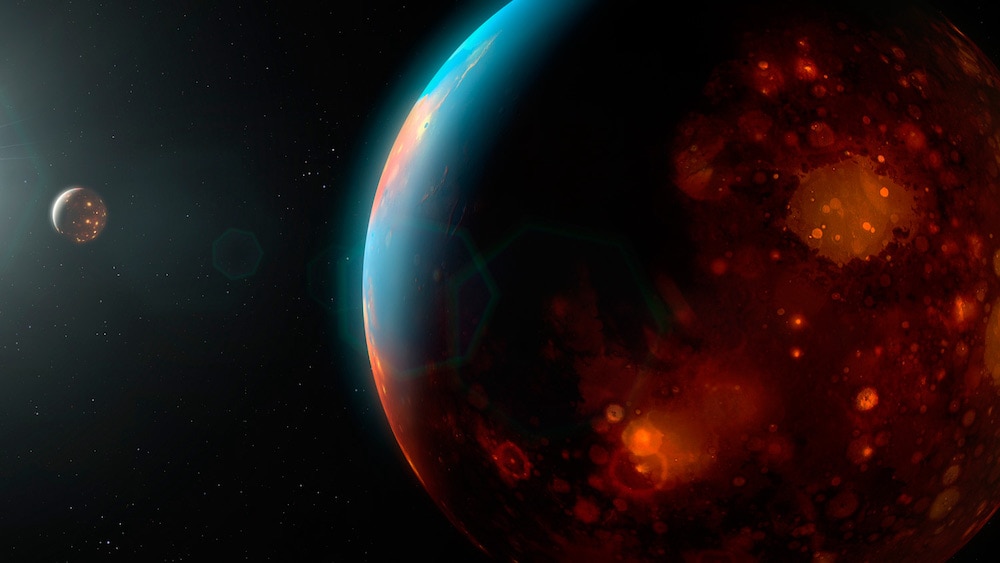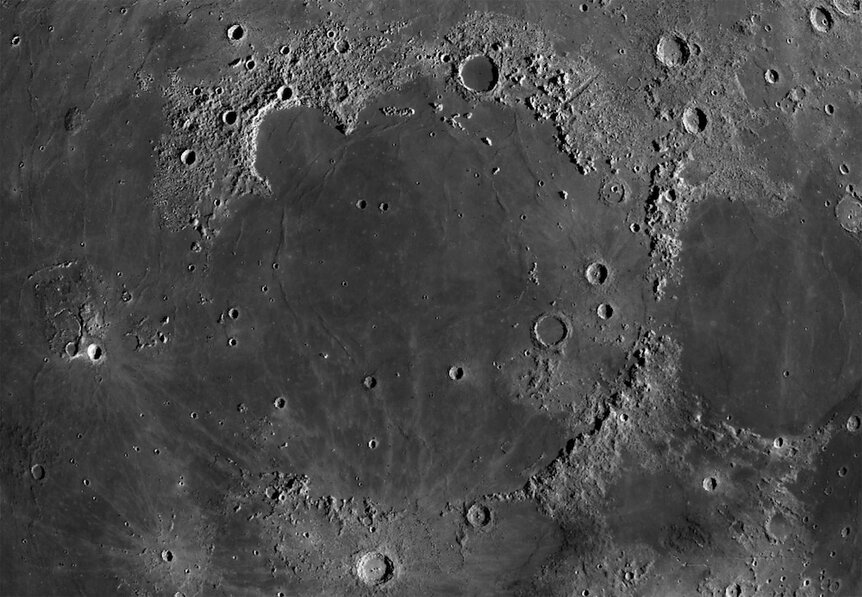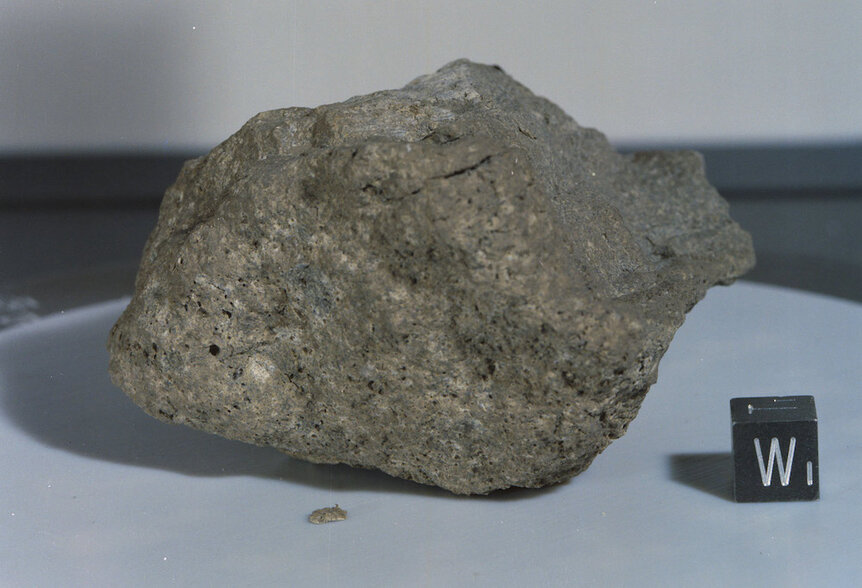Create a free profile to get unlimited access to exclusive videos, sweepstakes, and more!
The last moments of Earth's formation seriously scarred the Moon
Giant impacts on the Moon may have come from the last chunks of material that formed the Earth.

There's a popular hypothesis among planetary scientists that, very early in our solar system's history, the migration of gas giants like Jupiter and Saturn threw a huge wave of giant asteroids into the inner solar system. This created a distinctive and cataclysmic blitz of asteroids late in the formations of the inner planets.
This impact wave, called the Late Heavy Bombardment (or LHB) is fairly well established. But a new paper just published by a pair of planetary scientists throws doubt on the idea that it was caused by the outer planets. Instead it looks more like it was the tail end of a longer event that formed the inner planets in the first place.
The amount of material that fell to Earth in this late event is only about 0.5% of the Earth's total mass, but it tells us a lot about the formation history of our planet and makes up a decent fraction of the planet's crust, so it's important.
All right then, what's the story?
The planets started forming roughly 4.6 billion years ago. As Earth and other planets coalesced they were hit over and again by huge asteroids, and grew large from these events as they assimilated the incoming material. Not long (less than 100 million years) after Earth had grown to near its present size it was hit by another planet-sized body, throwing material into orbit which formed the Moon.
But the onslaught continued after that as well. There are huge impact basins on the Moon indicating it was slammed by very large impacts. A key part of the science of the Apollo Moon landings was to collect rocks from different impact areas to see when these events occurred; scientists assumed the rocks would have different ages since they came from different impact events.
But they were surprised to find the rocks seemed to have a cluster of ages around 3.9 billion years. Since they came from different impact events that all happened around the same time, the scientist concluded there must have been a late heavy bombardment.
I'll note here that while a large part of the scientific community accepts this idea, it's not a consensus. It's possible the rocks were contaminated by debris spread by a very late impact (which crated Mare Imbrium on the Moon, so this is called the Imbrium impact) and that could explain the clustering of dates. Still, meteorites from the protoplanet Vesta in the main asteroid belt also show an age cluster around the same time, so it's still generally agreed that the Late Heavy Bombardment happened.
What caused it? For a long time it was thought the planets formed at their current distances from the Sun, but around 2005 planetary scientists meeting in Nice, France, came up with a different idea: The gravity of the giant planets meant they yanked and tugged on each, causing their distances from the Sun to change. A sudden shift by Jupiter and Saturn caused Uranus and Neptune to move outward, where their gravity disturbed smaller objects out there, sending them into the inner solar system to create the Late Heavy Bombardment. This idea was named after their meeting place, and is called the Nice ("neece-eh") model.
But did this migration cause the bombardment? There's another idea that the bombardment was just the tail end of a longer, steadier wave of impacts from material that formed the inner planets in the first place. You'd expect a handful of big impacts even late in the process, and that may have been what caused the giant basins on the Moon.
How do you which was the cause? The big difference between the two ideas is that the Nice model says these asteroids would've come from the outer solar system, while the second model predicts they would've come from the same source as stuff that formed the inner planets as the first place.
So how can these be distinguished? Previous analysis hasn't been certain, so in the new research the scientists tried something different. They looked at ruthenium and molybdenum, elements that can be measured in these rocks. The ratio of their abundances — how much ruthenium is in a rock compared to molybdenum — can be measured, and that ratio is different for objects in the inner and outer solar system.
They examined three rocks from Apollo 16 and two meteorites that fell in northwest Africa that are known to have come from the Moon (they are mineralogically similar to known Moon rocks, and probably fell to Earth after an asteroid whacked the Moon and sent shrapnel into space).
Long story short, what they found is that the ratios looked more like the stuff that initially formed the inner planets, and not from stuff that came form the outer solar system. So it looks like whatever pummeled the Moon 3.9 billion years ago was locally sourced, and this means it likely came from the tail end of the formation of the inner planets themselves.
So what of the Nice model? It predicts the outer planets should've sent a hail of icy rock bombs into the inner solar system, and it's such a successful model in other areas that this prediction should be correct as well. What the scientists here posit is that this flurry of incoming rocks did indeed happen, just earlier than previously thought, during the main phase of planetary formation, and not toward the end.
An interesting corollary to all this has to do with the origin of Earth's water. It's not clear where all our water came from or when. It likely came from the outer solar system, since water ice is extremely common in the outer solar system. But when? The new work indicates that the material that hit the Earth later on would not have had much water in it, implying the water-bearing impacts happened earlier on, perhaps again during the main phase of planetary formation.
It's funny to think we're not sure about the last 0.5% of the Earth's formation material, but it's only been recently that we've been able to figure all this stuff out. And if you think that's not much material, I'll note that 0.5% of Earth's mass is 30 quintillion tons: 30,000,000,000,000,000,000 tons. That's a lot. Knowing where it came from and when would be... nice.





























